Agricultural and Biological Research
RNI # 24/103/2012-R1
Research Article - (2024) Volume 40, Issue 1
Background: Managing follow-up and treatment complications in pregnant women with pregnancy-induced hypertension poses a significant global health challenge, being a leading cause of maternal and perinatal morbidity and mortality. Addressing this issue requires the development of a self-learning knowledge-based system that can aid health professionals in timely follow-up and treatment of pregnancy-induced hypertension to minimize maternal deaths. Thus, this study aimed to develop a self-learning knowledge-based system that helps patients and physician’s follow-up on pregnancy-induced hypertension and its treatment.
Methods: An experimental research design was employed to create the proposed system. Domain experts, selected purposively from Jimma Medical Center, contributed knowledge through structured and unstructured interviews. The acquired knowledge was then odelled and represented using a decision tree and production rules.
Results: A self-learning knowledge-based system for the follow-up and treatment of pregnancy-induced hypertension was successfully developed. The system’s performance was 81.25%, which demonstrated its effectiveness. Additionally, user acceptance of the system was assessed through visual interaction with domain experts, yielding a positive result of 83.44%.
Conclusion: The developed system plays a vital role in saving the lives of pregnant women, particularly in health centers where healthcare professionals are scarce. Moreover, it has the potential to reduce the time and cost associated with follow-up and treatment in health centers. Therefore, the researchers recommend the adoption of this system by hospitals and health centers to enhance healthcare services.
Self-learning; Knowledge-based system; Follow-up; Pregnancy-induced hypertension; Production rule
Pregnancy-induced hypertension, characterized by elevated blood pressure after 20 weeks of gestation, commonly known as preeclampsia, presents a significant health concern globally [1,2]. This condition, marked by hypertension, proteinuria and edema, arises as a consequence of pregnancy and typically resolves post-delivery. Distinguishing it from chronic hypertension, which manifests before the 20th week of gestation or persists for more than six weeks post-delivery, is crucial [3].
Approximately 10% of all pregnancies worldwide are complicated by Pregnancy-Induced Hypertension (PIH), affecting an estimated 5-8% of pregnant women [4]. Hypertension during pregnancy, influenced by lifestyle and hormonal changes, is a major public health challenge. Follow-up for pregnancy-induced hypertension is tailored based on factors such as family history, the age group of pregnant mothers, and the classification of hypertensive disorders during pregnancy.
Preeclampsia and its complications contribute significantly to maternal and perinatal morbidity and mortality, particularly in low and middle-income countries like Ethiopia [5]. According to the World Health Organization, approximately 580,000 women of reproductive age succumb to complications arising from pregnancy annually, with a substantial proportion of these deaths occurring in sub-Saharan Africa [6]. In Ethiopia, maternal and newborn mortality rates rank among the highest globally, with 590 deaths per 100,000 live births, primarily attributed to direct obstetric complications and chronic conditions.
Complications related to hypertensive disorders, specifically preeclampsia and eclampsia, stand out as the primary causes of maternal and perinatal deaths in Ethiopia [7]. The challenges in addressing pregnancy-induced hypertensive disorders in developing countries like Ethiopia include a scarcity of medical experts, insufficient antenatal care visits, and a lack of resources, particularly in remote or rural health centers.
Furthermore, severe hypertension increases the risk of adverse outcomes for both the mother and the fetus, including heart attacks, cardiac failure, cerebral vascular accidents, renal failure, poor placental oxygen transfer, fetal growth restriction, preterm birth, placental abruption, stillbirth and neonatal death. Hypertensive disorders represent the most common medical complications during pregnancy, with an incidence between 5 and 10% [8].
The realm of Artificial Intelligence (AI) research and development holds significant promise in health and medicine [9]. Knowledge-Based Systems (KBS) find applications in healthcare, diagnosis, control and monitoring. KBS can function as expert systems on demand, efficiently pooling the collective knowledge of one or more experts. Different approaches, such as neural networks, intelligent agents, fuzzy logic, genetic learning and self-learning, have been employed in KBS development. Self-learning, a crucial element of KBS, seeks to emulate human learning capabilities by updating the knowledge base manually or automatically using machine learning algorithms and as noted by this same study, “Self-learning is a scientific task that enables the knowledge-based system to learn automatically from the inference process” [10].
While numerous research efforts have aimed to develop KBS for healthcare services, to the best of the researcher’s knowledge, no study has been conducted on KBS for the follow-up of pregnancy-induced hypertensive disorders in the Ethiopian context. Therefore, this study endeavors to fill this gap by developing a self-learning KBS designed to assist patients and physicians in the follow-up of pregnancy-induced hypertension and its treatment.
Research design
According to Biswas et al., an experimental research design is appropriate to develop an intelligent medical system for diagnosing common diseases by acquiring tacit and explicit knowledge from domain knowledge experts [11]. Hence, an experimental research design was used to develop the proposed system.
Study area
The primary data source used for this study was from Jimma Medical Center. The Medical Center is run by Jimma University and is found in Oromia Regional State, Jimma City at about 350 km away from Addis Ababa, the Capital City of Ethiopia in the southwest. It is one of the oldest public hospitals in the southwest part of the country and is the only teaching and specialized hospital in southwest Ethiopia. In addition, the hospital serves as a referral site and provides specialized care for southwestern Ethiopia. This hospital was selected since highly qualified experts are available at the hospital.
Population of the study and sampling technique
The target population of this study was the gynecologists and other health professionals in the hospital’s maternity ward because the health professionals in gynaecology are the experts who generate the knowledge and use the system.
In this study, the researchers considered the domain experts who work as doctors, gynecologists, midwifery, nurses and health officer who have knowledge of Antenatal and postnatal care treatment of hypertension disorders in pregnancy through interview. Purposive sampling technique was used to select samples from the hospital’s health professionals. Ten (10) domain experts were selected from the study site using purposive sampling techniques. These experts were selected due to their educational qualifications and experience in gynecology and obstetrics. In addition, purposive sampling was used for collecting cases for testing and evaluating the performance of the system. For this purpose, sixteen (16) cases were collected.
Moreover, a questionnaire was developed and distributed to 8 health professionals to conduct the acceptance test of the developed system. The respondents made sufficient visual interaction on how the system supports the follow-up of pregnancy-induced hypertension. Following the demonstration, questionnaires were distributed to the respondents, followed by data analysis.
Knowledge acquisition
Even if it is challenging to acquire tacit knowledge, interview and observation are appropriate methods for gathering such knowledge for developing KBS using rule-based reasoning [12]. According to Potter, interviews were necessary for effective knowledge acquisition [13]. The purpose of the interview was to gather domain knowledge from physicians who are well experienced in the follow-up of pregnancy-induced hypertension. For this research, primary data was gathered through a questionnaire and interview. Moreover, secondary data was acquired from medical books, training manuals, treatment protocols and medical articles by using the document analysis technique. Semi-structured interview technique was employed to acquire the required knowledge of the selected domain experts or health professionals. This way of collecting data allows the interviewer to change the order of questions and add new questions depending on the response. Therefore, this interview focuses on the concept, procedures, guidelines and experience domain experts use while follow-up of pregnancy-related hypertension disorders.
Observation was also used to acquire domain knowledge which is often very difficult for an expert to explain what he/she does and the interpretation of what he/she does may not be accurate. Therefore, it is instrumental for the knowledge engineer to observe the domain knowledge experts in action. For example, the way the expert solves the problem can have tones that will not come across when the expert is interviewed. For this reason, the researchers selected experts to interview and observe to acquire domain knowledge.
Conceptual modeling and knowledge representation
Constructing knowledge-based systems was viewed as a modelling activity of organized knowledge. To ensure well-formed models, selecting appropriate knowledge modelling methods are an important stage in the KBS development process. Decision trees were used for conceptual modelling of the acquired knowledge. Decision tree is used in many disciplines such as medical diagnosis, cognitive science, law and computer diagnosis [14]. In KBS, there are many reasoning mechanisms; among others, the most commonly used are rule-based, case-based or a combination of the two.
On the other hand, rule-based reasoning reasons from domain knowledge are represented in a set of rules. As a result, the rule-based representation/production rule method is more appropriate to represent and demonstrate the actual domain knowledge. It means that after acquiring knowledge from the domain experts, the knowledge was represented by the production rule “IF…THEN…ELSE” Therefore, the researchers used the production rule for knowledge representation.
Implementation tool
Prolog has a purely logical subset, called pure Prolog and many extra logical features. Prolog is a programming language/shell developed primarily to enable the implementation of logic-based systems. It is often used to develop automated proof systems and automated problem solvers. Prolog, being logical, can be very powerful. It is flexible, especially compared to shells and because it includes a control strategy, there is no need to write an inference mechanism. Hence, in this study of developing a self-learning KBS system, the researchers used SWI Prolog (version 6.4.0).
Implementation and experimentation
The system was developed by Programming in Logic (Prolog). The most important criterion for any KBS is the accuracy of their inference engines based on acquired knowledge. Therefore, it is evident that after necessary acquired knowledge was represented using a rule-based knowledge representation technique, the next step is coding the represented knowledge using suitable language into an inference engine.
The architecture of a developed KBS consists of major components that are common for all KBS, such as: human expert, knowledge-base, knowledge engineer and users and two essential components are added to enhance the knowledge-based system such as self-learning with dynamic module and explanation facility components as shown in Figure 1.
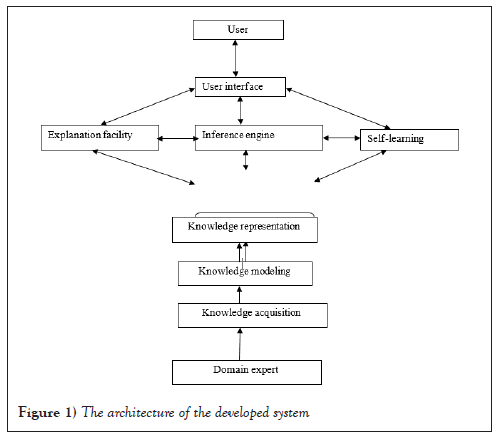
Figure 1: The architecture of the developed system.
User interface
The appropriateness of a KBS depends on the quality of the user interface. The user interface is used as the means of interaction between the user and the system. Users interact with the system through "yes" and "no" responses for this KBS. Based on the user's response, the system draws a conclusion based on rules inserted in the knowledge base. Finally, the systems display the conclusion in the user interface window. Figure 2 below shows the welcome window.
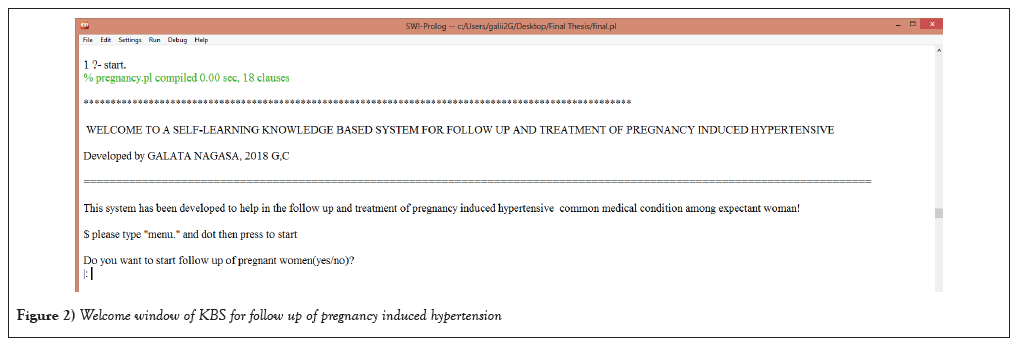
Figure 2: Welcome window of KBS for follow up of pregnancy induced hypertension.
The welcome window asks if the user wants to process a follow-up of pregnant woman. The user can do a follow-up for a pregnant woman by typing "yes" and a full stop (.) and hitting the return (enter) key on the keyboard. However, if the user does not want to process any follow-up for a pregnant woman, he/she can type "no" and exit the system. Since the purpose of this knowledge base is to do a follow-up and the treatment of pregnancy-induced hypertension, the two major pregnancy-induced hypertension visits gestational period (in weeks) should be known. The user interaction with the system is carried out by responding to some department-oriented questions about specific cases. Every time the user asks, the system first checks to see if the answer is already known to be “yes” or “no”. It will assert the user’s response if it is not known. The system accepts the input after checking its validity. If the input is invalid, the system responds with an error message and requires the user to re-enter the information.
Follow-up and treatment
Follow-up cases within the system are structured as predicates, encompassing ask, response, reply and knowledge predicates. This development framework enables knowledge engineers to seamlessly expand the system in the future, accommodating additional features. For instance, the system, as developed, can facilitate the follow-up of diverse conditions such as chronic hypertension, gestational hypertension, preeclampsia and eclampsia. Consequently, the knowledge base of the system encompasses factual information on various diseases, including preeclampsia, eclampsia, chronic hypertension and gestational hypertension. This repository includes details about the causes of each disease, their symptoms and accepted medical protocols for diagnosis.
As an illustration, if a patient exhibits symptom such as pregnancy under 20 weeks of gestation, evidence of protein in the urine (confirmed by a lab test), a history of hypertension before pregnancy, blood pressure equal to or greater than 140/100 mmHg and signs of fetal distress, the system systematically queries the user about these symptoms. If all identified symptoms are confirmed as true, the system informs the user of the diagnosis-severe chronic hypertension with superimposed preeclampsia. However, if any symptom is absent and confirmed as "No" by the user, the inference engine swiftly transitions to the first symptom of another potential disease. The system then proceeds to verify all symptoms of the alternative disease and upon positive confirmation, provides a diagnosis corresponding to the user’s responses.
The system adeptly combines different signs and symptoms to enable the follow-up of Pregnancy-Induced Hypertension (PIH). This integration incorporates both tacit and explicit knowledge sourced from domain knowledge experts, specifically pertaining to the signs and symptoms of hypertension disorders during pregnancy. Figure 3 exemplifies how the system accepts user responses and delivers a final recommendation as a solution for follow-up and treatment, while Figure 4 illustrates the system’s assistance in the follow-up and treatment of severe preeclampsia.
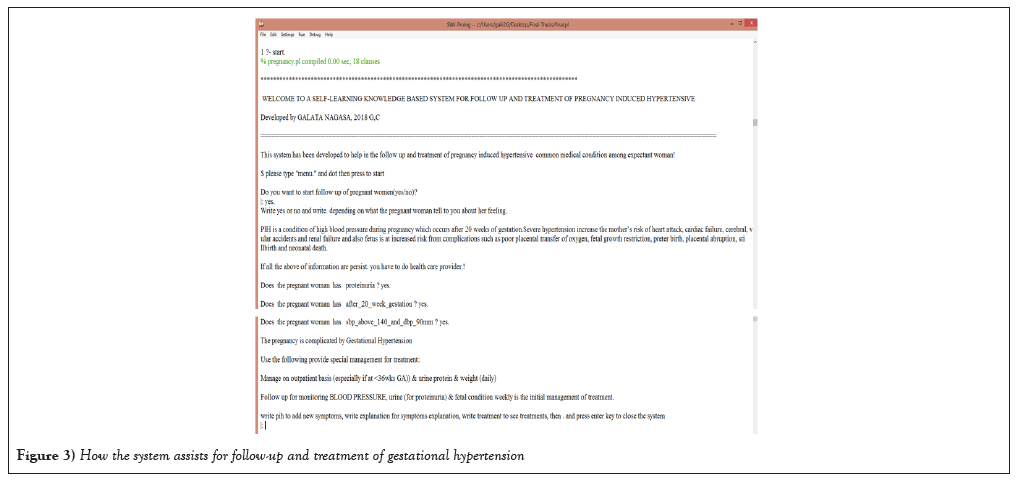
Figure 3: How the system assists for follow-up and treatment of gestational hypertension.
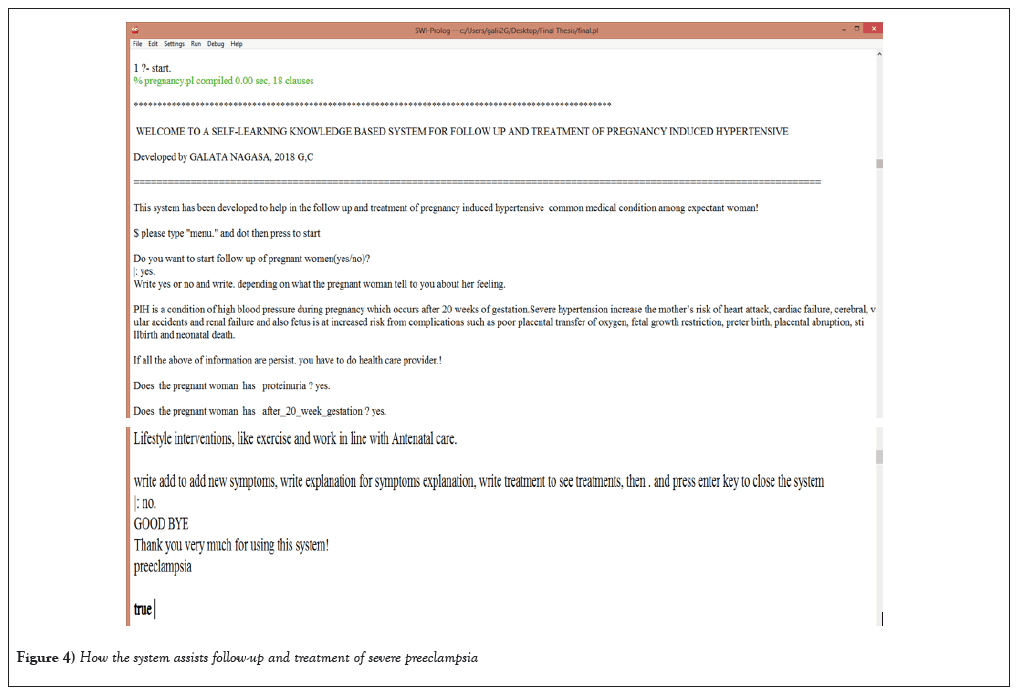
Figure 4: How the system assists follow-up and treatment of severe preeclampsia.
It is crucial to provide special care if pregnancy is complicated after 36 weeks of gestational period, and thus a very close follow-up should be done for the patient. Whether special care is provided or not, the subsequent care should be immediately provided. In this case, as shown in Figure 4, preeclampsia is the first condition to be checked. The patient is asked for preeclampsia, the response is held in the response predicate and the system suggests a follow-up and treatment for eclampsia.
Self-learning components of the system
The system possesses the capability to dynamically incorporate new facts and rules related to signs and symptoms during runtime. This autonomous functionality allows the system to automatically update existing facts by substituting them with newly acquired information, all without requiring intervention from a knowledge engineer. In Figure 5, the system’s ability to assimilate new symptoms and retain all rules after diagnosis and follow-up is visually represented. Once a new fact is integrated, the system can further enhance its learning by acquiring new follow-up care information. This information becomes valuable when the system assesses services that are within the purview of health professionals.
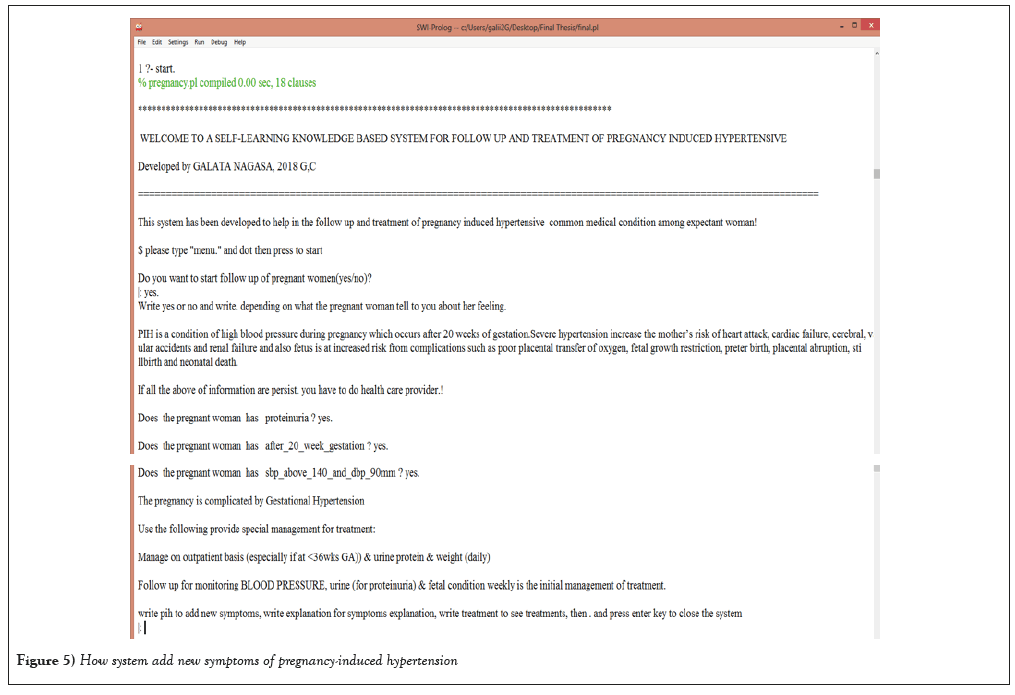
Figure 5: How system add new symptoms of pregnancy-induced hypertension.
Testing and evaluation of the system
After the system of KBS for follow-up of pregnancy-induced hypertension was developed, the final step is evaluating its performance. In other words, to know the accuracy of the system that the degree to which the system was correct in delivering its follow-up of pregnancy, hypertension, classifying the type of hypertension a patient has or could have and in specifying the severity or mildness of the type of hypertensive disorders of pregnancy. Cases were collected from the Jimma Medical Center to evaluate the system’s performance. The numbers of collected cases were sixteen (16). Classifying the test cases into correct or incorrect instances is required to evaluate the system’s performance in assigning the cases to the correct classification by domain experts. The better performing system decides non-complication of pregnancy cases as "incorrectly" and complicated pregnancy cases as "correctly" classified being decided by experienced physicians. The finding is presented in table.
Upon the development of the Knowledge-Based System (KBS) designed for the follow-up of pregnancy-induced hypertension, the final phase involves assessing its performance. This evaluation aims to gauge the accuracy of the system, determining how effectively it provides follow-up for pregnancy-induced hypertension, classifies the type of hypertension a patient may have and specifies the severity or mildness of hypertensive disorders during pregnancy.
To assess the system’s performance, cases were gathered from Jimma Medical Center, with a total of sixteen (16) cases collected for evaluation. The classification of test cases into correct or incorrect instances was essential for evaluating the system's accuracy in assigning cases to the correct classification, as determined by domain experts.
The performance assessment involved the categorization of test cases by experienced physicians. The system’s proficiency was measured based on its ability to correctly classify complicated pregnancy cases as "correct" and non-complicated pregnancy cases as "incorrect." The outcomes of this evaluation are detailed in Table 1.
| Actual correctly followed and treated cases | Actual incorrectly followed and treated cases | |
|---|---|---|
| Predicted correct by the system | 9 | 1 |
| Predicted incorrect by the system | 2 | 4 |
| Total | 11 | 5 |
Table 1: Confusion matrix of the system testing and evaluation.
This table provides insights into the system’s efficacy in accurately categorizing pregnancy cases, hypertension types and the severity of hypertensive disorders during pregnancy. These findings serve as a critical indicator of the system’s reliability and effectiveness in a real-world healthcare setting.
System performance evaluation
As indicated in Table 1, the system exhibited a performance rate of 81.25%. To delve deeper into the system's efficacy, metrics such as recall, precision, and F-measure were computed based on the data presented in the confusion matrix (Table 1). The recall value stood at 0.8181, and precision was calculated as 0.9.
In the assessment of Knowledge-Based System (KBS) performance, recall and precision are pivotal measures of efficiency and effectiveness. The recall value of 0.8181 and precision of 0.9 reflect the system’s ability to appropriately identify and classify cases related to pregnancy-induced hypertension. Additionally, the F-measure, serving as a derived measure of effectiveness, was calculated as 0.857. This value, interpreted as a weighted average of precision and recall, signifies the system’s outstanding performance, with 1 being the optimal score and 0 the worst.
It is essential to acknowledge the challenges encountered during the evaluation of the system’s performance. Some cases presented insufficient information regarding signs and symptoms of pregnancy-induced hypertension, posing a challenge to accurate evaluation. Furthermore, variations in knowledge among professionals regarding the follow-up of pregnancy-induced hypertension added complexity to the assessment process. Despite these challenges, the system demonstrated commendable effectiveness in its overall performance evaluation.
User acceptance testing
The user acceptance test is a process of evaluating a new or revised system undertaken by domain experts, knowledge engineers and users of the system to ensure it meets its development objectives. It is independent of the system development process and performed by users and stakeholders before being formally used. For this purpose, eight (8) domain experts were selected from Jimma Medical Center. Since the procedure requires visual interaction with all selected domain experts, it is not easy to take many respondents. The researchers presented the system to the domain experts to check on what it can do and its user interface. For this purpose, the researchers distributed questionnaires to those domain experts and data was collected. The distributed questionnaire helps system evaluators to check on the user interface design aspects, easiness of the system to use, attractiveness of the user interface, the correctness of the decision, adequacy of knowledge content, problem-solving ability and significance of self-learning KBS in the follow-up and treatment of pregnancy-induced hypertension disorders. Lastly, the user acceptance of the system was analyzed. The evaluators were allowed to rate the options as excellent, very good, good, fair, or poor for these close-ended questions. Table 2 depicts the analyzed data regarding user acceptance of the system, which was collected from the respondents.
| No | Question for evaluation | Poor (1) |
Fair (2) |
Good (3) |
Very good (4) | Excellent (5) | Average | Total avg/ performance (in %) |
|---|---|---|---|---|---|---|---|---|
| 1 | The system is simple to use during the interaction? | 0 | 0 | 1 | 4 | 3 | 4.25 | 85 |
| 2 | How much the system result and descriptions are easily understandable? | 0 | 0 | 1 | 2 | 5 | 4.375 | 87.5 |
| 3 | How was the user interface of SLKBSFTPIH* attractive to users? | 0 | 1 | 3 | 2 | 2 | 3.25 | 65 |
| 4 | Is the system efficient in time? | 0 | 0 | 0 | 2 | 6 | 4.75 | 95 |
| 5 | How was the adequacy and clarity of results for making a decision? | 0 | 1 | 1 | 2 | 4 | 4.125 | 82.5 |
| 6 | How accurately does the system reach a decision about the follow-up and treatment of pregnancy-induced hypertension? | 0 | 0 | 2 | 2 | 4 | 4.25 | 85 |
| 7 | Is the system provides the right description and suggestion followed to the treatment of PIH*? | 0 | 0 | 1 | 3 | 4 | 4.375 | 87.5 |
| 8 | How do you rate the significance of the system in the domain area? | 0 | 0 | 2 | 4 | 2 | 4 | 80 |
| Total average | 4.172 | 83.44% | ||||||
Note: SLKBSFTPIH*: Self-Learning Knowledge-Based System for Follow-Up and Treatment of Pregnancy-Induced Hypertension; PIH*: Pregnancy-Induced Hypertension.
Table 2: Performance evaluations by domain experts.
It was found that most evaluators have positive feedback about the self-learning KBS, especially about the system’s knowledge base. According to the evaluation results filled by the domain experts, the average performance of the system is 4.172 out of 5 or 83.44%, which shows the users are satisfied with the self-learning KBS. The system evaluators also provide suggestions and constructive comments on the weakness and strengths of the KBS. According to the system evaluators, the following are some of the limitations of the KBS.
• The system cannot make creative and intelligent responses as a human expert.
• It lacks robustness such as sensitivity and response-ability.
• The system lacks the incorporation of some task in follow-up treatment processes, such as physical and laboratory test, which is significant to making a conclusion.
• The system interacts with the user using only 'yes' or 'no' replies. Therefore, it lacks some flexibility.
Even though the system evaluators forwarded their constructive feedback on the developed system, they opined that it helps to follow up on many pregnant women in a short time frame and solve the shortage of human resources in the pregnancy-induced hypertension department. They also said that it gives reliable answers for repetitive decisions, processes and tasks and thus more accurate and easy to use, applicable anywhere. Hence, they said they could advise themselves by having the software and make the follow-up and treatment processes clearer by showing the steps and procedures to be carried out by a domain expert.
In contemporary healthcare settings, information technology continually seeks innovative ways to enhance operational efficiency and flexibility within healthcare management systems, ultimately reducing costs associated with various healthcare processes. KBS offer swift and adaptable automation for healthcare management processes. Pregnancy-induced hypertension, a widespread medical concern, demands special attention during the intrapartum period. The developed self-learning knowledge-based system underwent evaluation for both system performance and user acceptance testing.
In the system performance test, the achieved result was 81.25%, while user acceptance testing, involving eight maternity ward experts, yielded an accuracy of 83.44% (Table 2). The average result across all test options was 82.35%, indicating that the self-learning knowledge-based system for pregnancy-induced hypertension follow-up and treatment is considered acceptable. Users embraced the developed knowledge-based system for pregnancy-induced hypertension follow-up and treatment, meeting the study’s objectives. However, it’s important to note that approximately 15% of cases were incorrectly classified, primarily due to the system’s inability to track a patient’s previous history.
Comparisons with related studies reveal encouraging findings. For instance, a study on a localized knowledge-based system for human disease diagnosis achieved a performance and user acceptance rate of 81.5%, slightly lower than the present study [15]. Additionally, a medical expert system for diagnosing and treating hypertension disorders of pregnancy, while conceptually beneficial, has not yet been widely implemented [16].
The proposed self-learning Knowledge-Based System not only makes informed decisions but also offers appropriate advice during the follow-up and treatment of pregnancy-induced hypertension. With a performance result of 82.35%, an average of user acceptance and system performance, the self-learning knowledge-based system outperforms previous systems in the same domain.
The self-learning KBS approach in designing a follow-up and treatment system for pregnancy-induced hypertension demonstrates promising results. This approach has the potential to significantly aid human experts in delivering enhanced healthcare services, specifically in the realm of pregnancy-induced hypertension follow-up and treatment, where there is a scarcity of physicians. Establishing a knowledge base expert system for addressing pregnancy-induced hypertension issues provides a foundation for accurate analysis and informed recommendations.
Despite the success of the self-learning knowledge-based system, challenges were encountered during the study. The system’s performance is directly linked to the quality of knowledge acquired from domain experts, and eliciting tacit knowledge proved to be a complex task. Furthermore, incorporating new facts/rules into the self-learning system posed difficulties during the development process, emphasizing the need for seamless automatic updating of the knowledge base.
In general, the self-learning knowledge-based system for pregnancy-induced hypertension follow-up and treatment presents a valuable contribution to healthcare management systems. While challenges were encountered, the system’s overall performance, user acceptance and potential impact on healthcare services underscore its significance in addressing pregnancy-induced hypertension in diverse healthcare settings. Continued efforts in refining and expanding the system’s capabilities can contribute to its widespread adoption and application in improving maternal healthcare outcomes.
The developed self-learning knowledge-based system emerges as a potential lifesaver for pregnant women in health centers and hospitals where healthcare professionals are scarce. Additionally, it promises to significantly reduce the time and cost associated with follow-up and treatment this disease in health centers. The researchers strongly recommend the widespread adoption of the developed system by hospitals and health centers to enhance overall health services.
Several recommendations are proposed to optimize the applicability of KBS in the domain area. First and foremost, hospitals and health centers should embrace and accept technological advancements like the developed system to enhance the quality of health services within their organizations. Moreover, healthcare professionals, particularly doctors and experts, should actively contribute to updating the system’s knowledge base by adding new cases regularly.
To facilitate ease of use, the system should be packaged as a standalone application that can be easily installed by end-users. To enhance problem-solving in complex real-world situations, it is suggested to integrate the capabilities of rule-based reasoning systems with case-based reasoning systems. Case-based reasoning can enrich rule-based reasoning by providing contextual information and extending rule coverage by incorporating exceptions in the form of cases.
While the SWI-Prolog editor environment was utilized for the development of these self-learning Knowledge-Based Systems, future iterations could benefit from incorporating other visual user interface tools such as Java and C# to enhance interactivity and user experience. Additionally, the development of KBS that automatically shares knowledge through mobile applications is recommended. A self-learning KBS, with its ability to add new facts/rules and serve as a knowledge base, can function effectively as a database for storing information permanently.
Looking ahead, it is suggested to explore user interface support extensions, potentially using visual Prolog, to ensure accessibility by all healthcare centers. These recommendations aim to maximize the effectiveness and utility of the self-learning knowledge-based system, promoting its seamless integration into healthcare practices and contributing to the advancement of maternal healthcare outcomes.
The authors would like to acknowledge Jimma University for providing a small fund to carry out this research and Jimma Medical Center for giving us the data and the domain experts who participated in the study process.
[Crossref] [Google Scholar] [PubMed]
[Crossref] [Google Scholar] [PubMed]
[Crossref] [Google Scholar] [PubMed]
[Crossref] [Google Scholar] [PubMed]
[Google Scholar] [PubMed]
Citation: Negasa G, Diriba C, Jimma W. Developing a self-learning knowledge-based system for the follow-up and treatment of pregnancy-induced hypertension. AGBIR.2024;40(1):880-886.
Received: 26-Dec-2023, Manuscript No. AGBIR-23-123569; , Pre QC No. AGBIR-23-123569 (PQ); Editor assigned: 28-Dec-2023, Pre QC No. AGBIR-23-123569 (PQ); Reviewed: 11-Jan-2024, QC No. AGBIR-23-123569; Revised: 18-Jan-2024, Manuscript No. AGBIR-23-123569 (R); Published: 25-Jan-2024, DOI: 10.35248/0970-1907.24.40.880-886
Copyright: This open-access article is distributed under the terms of the Creative Commons Attribution Non-Commercial License (CC BY-NC) (http:// creativecommons.org/licenses/by-nc/4.0/), which permits reuse, distribution and reproduction of the article, provided that the original work is properly cited and the reuse is restricted to noncommercial purposes. For commercial reuse, contact reprints@pulsus.com This is an open access article distributed under the terms of the Creative Commons Attribution License, which permits unrestricted use, distribution, and reproduction in any medium, provided the original work is properly cited.
